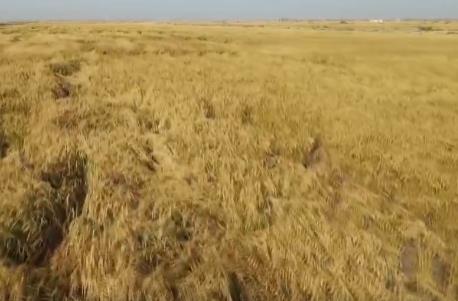High Yield Achieved Over Ten Thousand Acres of Salt-Tolerant Rice for the First Time in Xinjiang, China
In Aral City, Xinjiang, the National Salt-tolerant Rice Technology Innovation Center organized relevant experts to carry out actual yield measurement. Upon evaluation, the final theoretical yield per mu (a traditional unit of area in China, now standardized to 666.7 square meters or 1/6 acre) was close to 574 kilograms, achieving high yield over ten thousand acres for the first time.

Yin Feihu, an academician of the Chinese Academy of Engineering, introduced: the average yield of the three measured points in the end was 573.8 kilograms. This land was cultivated for the first time this year, reclaimed from saline-alkali land, and the variety used was Xin Rice 36.
This rice cultivation area is located on the northern edge of the Taklamakan Desert, with a PH alkalinity of over 8.5, classifying it as heavily saline-alkali land. The successful cultivation on the saline-alkali land in the northwest inland provides strong support for ensuring national food security and the strategy of “storing grain in land and technology.”